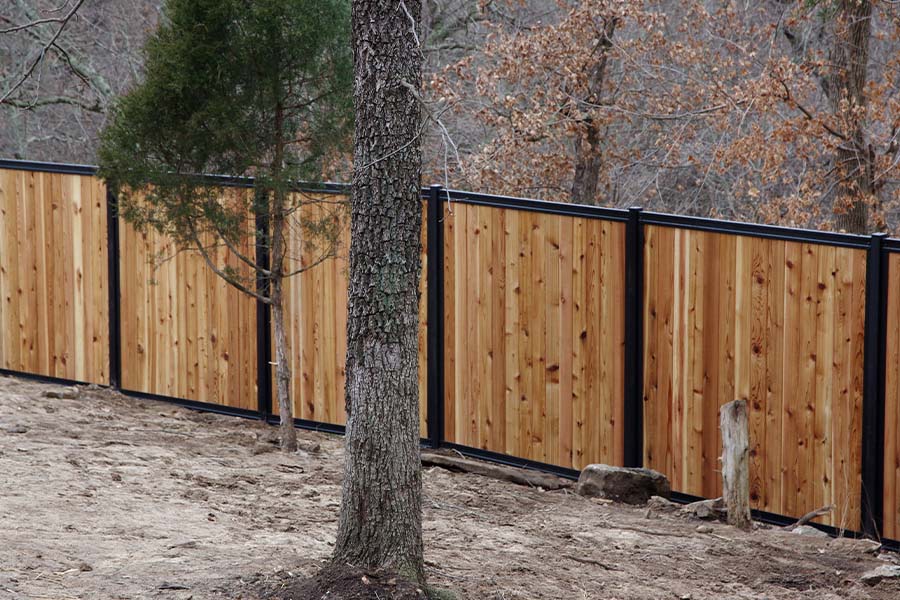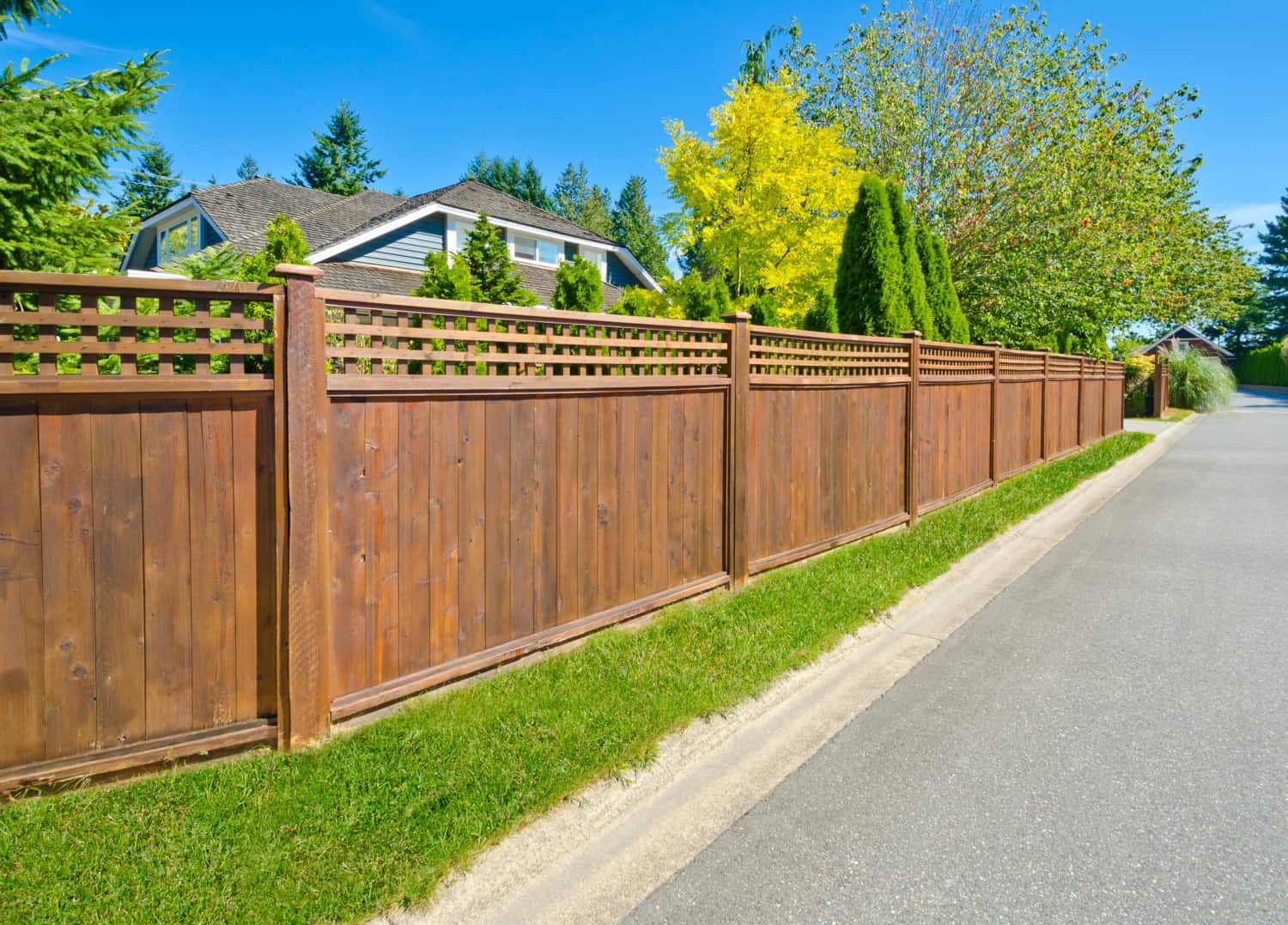All Categories
Featured

As sustainability ends up being a growing top priority for companies and homeowners, the need for eco-friendly structure materials prolongs to outdoor spaces, including fencings. Conventional fencing materials such as vinyl, wood, and steel can have significant environmental influences, from logging to chemical treatments and plastic waste. Nevertheless, there are a number of environment-friendly fence choices readily available that not only reduce the carbon footprint but likewise supply resilience and aesthetic allure. Let's explore a few of the most popular and sustainable secure fencing materials that can aid you go environment-friendly while still improving your property's style, security, and personal privacy.
- Bamboo Fence. Bamboo is one of one of the most lasting materials on the marketplace, and it is increasingly utilized in fencing building as a result of its quick development and strength. Unlike wood trees, bamboo is a grass that can expand back fully within just a couple of years, making it extremely eco-friendly. It's naturally resistant to pests and rot, which implies it doesn't call for extreme chemicals or treatments, making it a green selection.

Conveniences: Bamboo fences are sturdy, low-maintenance, and eco-friendly. They are normally resistant to termites and moisture, lowering the demand for chemical preservatives. In addition, bamboo aids lower soil disintegration as a result of its deep root systems. Factors to consider: Bamboo can be more pricey than some standard wood secure fencing options, and it might not be ideal for locations with severe cold or freezing temperature levels, as it can come to be breakable over time. 2. Recycled Materials Fence. Several makers now provide fences made from post-consumer plastic, recycled timber, or also repurposed steel. Numerous composite products, for example, are made from recycled plastic bottles, wood scraps, and other materials that would certainly otherwise be disposed of.
Conveniences: Recycled product fences help conserve natural deposits, lower contamination, and reduced the environmental influence of the production procedure. They can likewise offer impressive resilience, resisting degeneration, mold, and termites. Factors to consider: While recycled material fencings are highly sturdy and environment-friendly, they may not have the exact same all-natural visual that some property owners seek. Nevertheless, producers currently offer layouts that imitate the appearance of timber or rock. 3. Compound Secure fencing. Compound fence is made from a blend of wood fibers and plastic, usually incorporating recycled materials. This combination develops a very sturdy, low-maintenance fence that does not call for routine painting or discoloration, making it a sustainable option. Composite fences are resistant to rot, insects, and weathering, which implies they can last for several years without the demand for frequent substitutes.

Conveniences: Compound fencings are durable and can hold up against severe weather condition conditions, lowering the requirement for fixings or replacements. Since composite materials frequently consist of recycled content, they aid reduce plastic waste. In addition, they do not need hazardous chemicals or treatments. Factors to consider: Composite fencings can have a higher in advance price than typical timber or vinyl, though their toughness and minimized upkeep expenses frequently make them an extra cost-efficient choice over time. 4. Living Fencings. Living fencings, additionally referred to as hedgerows, are an environmentally friendly and cosmetically pleasing choice that includes growing thick shrubs, trees, or climbing up plants along your residential property line to develop an all-natural obstacle. Popular plants for living fences consist of boxwood, privet, and holly. These plants can be grown to offer privacy, windbreaks, and noise decrease while adding to ecological health.
Advantages: Living fences advertise biodiversity, boost air quality, and take in co2, making them one of the most environmentally friendly fencing choices. They also provide an all-natural habitat for birds and pests and can minimize sound pollution and help manage temperature levels in your yard. Factors to consider: Living fencings need routine upkeep, such as cutting, watering, and often pest control. They likewise take time to develop and might not give instant privacy contrasted to strong wood or plastic fencings. 5. Cedar and Redwood Fencing. Cedar and redwood are prominent natural timber choices for fencings. These materials are long lasting and normally resistant to rot, parasites, and moisture, which suggests they generally don't call for using harmful chemical treatments. When sourced from sustainably handled forests, cedar and redwood fencings can be an eco friendly selection that provides both beauty and longevity.
Perks: These woods are biodegradable, renewable, and deal superb toughness and all-natural appeal. Cedar and redwood also have a lower ecological impact when collected responsibly, making them an environmentally friendly option for lots of property owners. Factors to consider: While cedar and redwood fences have environmental benefits, they do still need periodic upkeep and are extra expensive than other wood options. It is very important to make sure that the wood is sourced from lasting forests to maximize its ecological advantages. 6. Rock and Brick Fencing (Reclaimed) Stone and brick fences are incredibly durable and low-maintenance, and they can be environment-friendly when made from reclaimed materials. Reclaimed stone and brick are commonly restored from old structures or building tasks, lowering waste and conserving natural deposits. These materials supply an ageless look and are highly resistant to weathering, making them a resilient remedy for fencing.
Benefits: Recovered stone and block are long lasting, cosmetically pleasing, and require very little maintenance. By repurposing these products, you help in reducing the need for brand-new resources and reduce waste in landfills. Factors to consider: The installation of stone and brick fencings can be labor-intensive and more costly compared to various other materials, however their longevity and low maintenance needs can make them affordable over time. Final thought. Environmentally friendly secure fencing options are not just good for the environment yet also provide resilience, reduced upkeep, and aesthetic charm. Whether you go with bamboo, recycled products, composite fence, living fences, or lasting wood like cedar and redwood, there are several ways to lower your ecological impact while improving your property's appearance. By selecting these eco-conscious materials, you can contribute to a healthier world and develop an exterior area that reflects your worths.
Latest Posts
Explore Special Auto Repair Offers in Chicago at Montclare Auto Repair
Published May 28, 25
1 min read
Discover the Premier Auto Repair Deals in Montclare, Chicago
Published May 27, 25
1 min read
Check Out Top Vehicle Maintenance Solutions at Montclare Auto Repair – Quality Service Today
Published May 26, 25
1 min read
More
Latest Posts
Explore Special Auto Repair Offers in Chicago at Montclare Auto Repair
Published May 28, 25
1 min read
Discover the Premier Auto Repair Deals in Montclare, Chicago
Published May 27, 25
1 min read
Check Out Top Vehicle Maintenance Solutions at Montclare Auto Repair – Quality Service Today
Published May 26, 25
1 min read